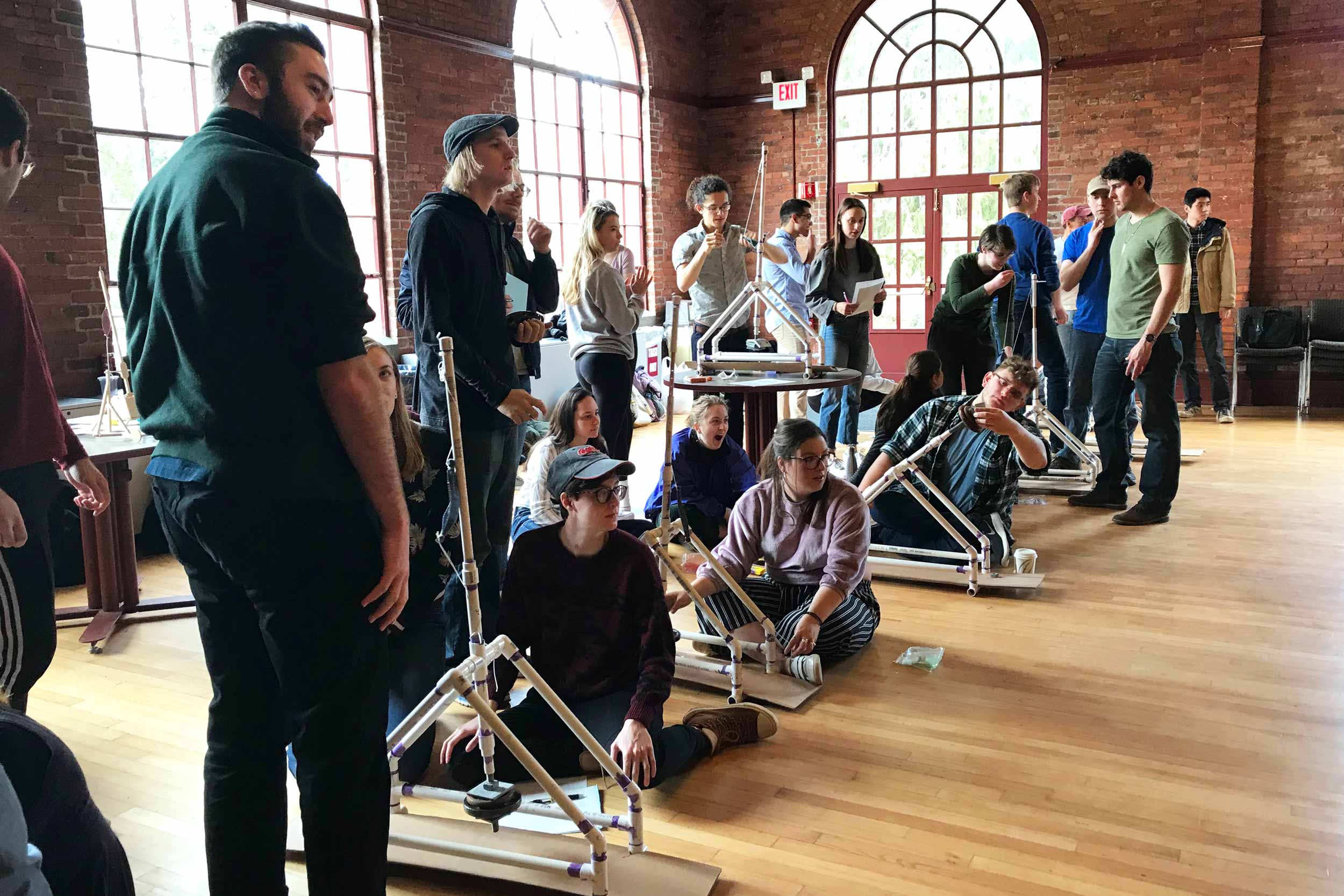Ready, Aim, Fire!Students Study Medieval Warfare Using Medieval Weapons
Ready, Aim, Fire!Students Study Medieval Warfare Using Medieval Weapons
One of the best ways to learn about medieval military history is to figure out how to use a medieval weapon. That’s why about two dozen students in a Medieval and Renaissance Studies class were firing balls of clay into a kiddie pool on their first day back from Spring Break, using scale models of a weapon called a trebuchet that was employed by armies during the Middle Ages.
“Imagine the kiddie pool is a castle and you want to bash the walls down,” Professor of Chemistry Christopher Smart told the students as they readied their weapons for launch in the Aula in Ely Hall.
Smart is co-teaching the class, called “Medieval Science and Technology,” with Professor of History Nancy Bisaha. “There has been a growing interest at Vassar in classes that combine STEM and humanities or social science – and this is one of them,” Bisaha said. “I’m teaching the history side of the class, and Chris is handling the science.”
Smart built eight trebuchets – odd-looking catapult-type contraptions -- out of plastic PVC piping and set them up at one end of the Aula. The weapons were designed to fling balls of clay at their target – the kiddie pool – using counterweights attached to piping mounted on a swivel. The challenge facing the students: finding the right combination of weights and length of pipe that would hurl a ball of clay on a trajectory that would land it in the kiddie pool.
Smart’s initial demonstrations were not encouraging. His trebuchet consistently failed to send the clay more than several feet before it landed on the floor. Within 10 minutes, however, most of the student teams had made the necessary adjustments that enabled them to land their balls of clay in or near the target. And when the actual “siege of the castle” began 45 minutes later, a four-student team that had dubbed their trebuchet “PVC Punch” fired all six of their balls of clay into the kiddie pool. “We stuck the landing!” exclaimed Madeleine Gaidimas ’19, a chemistry major from Ridgewood, NJ, as the first clay ball landed squarely in the middle of the six-foot circular pool.

Another member of Team PVC Punch, Candace Osterhout ’19, an English major from Yukon, OK, said she and her teammates had adjusted the length of the piping and the counterweights at the bottom of the shaft several times during their practice sessions, “and when we got into the competition, we just kept firing until all our clay was in the pool.”
Bisaha said each team was required to write a report on the efficiency and effectiveness of their weapons and submit it to their imaginary “medieval military commanders.” The assignment supplements assigned texts on medieval military history and other aspects of life in the Middle Ages that the students read during the first half of the course before Spring Break, she said.
Smart said he was impressed with what he had seen. “I didn’t expect all the engineering adjustments to be made so quickly,” he said. “All of the students did better than I did when I did my test-firings before the class. But of course, they had three or four brains working on the problem at once.”